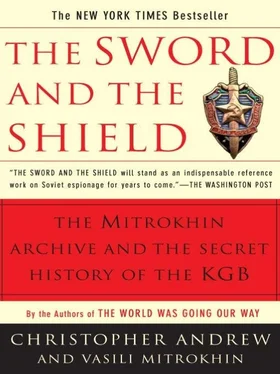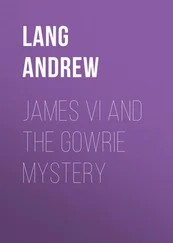The PCI’s fears of a right-wing military coup were revived by the overthrow of President Salvador Allende’s Unidad Popular government in Chile by the armed forces in September 1973. In December the PCI took secret delivery from the KGB of three SELENGA radio stations in order to enable Party headquarters to maintain contact with local branches if the PCI was forced underground. Party radio technicians were trained in Russia to operate the new system. In the aftermath of a coup the SELENGA radios would transmit messages to Moscow which would then be retransmitted to local PCI underground groups by powerful Soviet transmitters. 10
The renewed fear of an Italian putsch, however, also drove the PCI in directions which caused concern in Moscow that the West’s largest Communist Party was succumbing to ideological heresy. In a series of articles entitled “Reflections on Italy after the Events in Chile,” Enrico Berlinguer (who had succeeded Longo as general secretary in 1972) proposed, in a phrase which became famous, a compromesso storico (“historic compromise”) with the Socialists and the ruling Christian Democrats. 11Berlinguer was unlike any previous major Communist leader with whom the Kremlin had had to deal. His wife Letizia was a devout Catholic and he had agreed to their children being brought up in the Catholic faith. Longo had done his best to persuade Moscow that, despite his Catholic family, Berlinguer was the best available candidate and that his three main rivals, Giorgio Amendola, Gian Carlo Pajetta and Pietro Ingrao, were unsuitable for the post of general secretary. Amendola, according to Longo, “had a great deal of the bourgeois democrat about him and had too often committed revisionist errors;” Pajetta, “whose authority was dwindling, was too short-tempered and would not promote [Party] unity;” Ingrao was “superficial and given to unrealistic theoretical speculation.” Berlinguer, however, represented the new generation of Party leaders who had emerged since the Second World War. 12Moscow was far from reassured.
Berlinguer’s original proposal for a “historic compromise” was conceived chiefly as a defense against the prospect of a right-wing coup, justified by Lenin’s dictum that revolutionaries must know when to retreat. Gradually, however, the proposal evolved into a more ambitious—and, in Moscow’s view, heretical—strategy, in which Catholic traditions of solidarity would combine with Communist collective action to produce a new political and social order. During 1975 Berlinguer emerged as the chief spokesman of what became known as Eurocommunism. The PCI joined with the Spanish PCE and French PCF in issuing what was, in effect, a Eurocommunist manifesto, distancing themselves from the Soviet model of socialism and committing themselves to free elections, a free press and a parliamentary road to socialism within a multi-party system. 13
At a secret meeting with Ryzhov on December 12, 1975, a KGB informant on the Direzione accused Berlinguer and the Party leadership of “a cowardly rejection of Leninism” and growing hostility to the Soviet Union. He appealed to the CPSU to issue a public criticism of the PCI line: “This will almost split the party, but it is the only way to save the situation.” The informant also claimed that the PCI leadership was planning to disrupt the conference of European Communist Parties, due to be held in East Berlin in the summer of 1976, by using it as a platform for its revisionist views. 14
During the preparations for the East Berlin conference the Kremlin issued a series of thinly veiled public warnings to the Eurocommunists not to misbehave. Berlinguer, however, was not to be intimidated. During the Italian election campaign in June, he made what Moscow considered his most outrageous statement yet. Italian membership of NATO, Berlinguer declared, was on balance an advantage: “This guarantees us the kind of socialism that we want—to be precise, socialism in liberty, socialism of a pluralist kind.” The Kremlin responded with a scathing, though secret, letter of protest. Of far more significance so far as most of the PCI Direzione was concerned, however, was the fact that the Party received a record 34.5 percent of the vote (up 7.3 percent since 1972). At the East Berlin conference on June 29-30 the clash between the CPSU and the Eurocommunists was thinly papered over by a bland communiqué calling for “internationalist solidarity.” The speeches of Berlinguer and other leading heretics, which drew attention to flaws in “existing socialism” (in other words, the Soviet model), were published in Pravda only in a censored version. 15
In December 1976 the Bulgarian leader, Todor Zhivkov, always a faithful mouthpiece for the Kremlin, denounced Eurocommunism as one of the bourgeois propagandists’ “main lines of ideological subversion against proletarian internationalism.” 16The Kremlin’s scope for a direct, frontal assault on Berlinguer, however, was limited by his immense popularity. Instead, Andropov instructed Kryuchkov, the head of the FCD, to prepare active measures to discredit him and other tribunes of Eurocommunism. 17A report prepared by the FCD for the Central Committee claimed that Berlinguer owned a plot of land in Sardinia, and had been involved in dubious building contracts worth tens of billions of lira. 18
Remarkably, while hoping to destabilize Berlinguer by leaking evidence of his alleged corruption, Moscow continued to subsidize the PCI. The total subsidy for 1976 was 6.5 million dollars. 19According to KGB files, however, the “operational situation” for the transfer of money in Rome had become more difficult. The newly appointed resident, Boris Solomatin (previously stationed in New York), concluded in 1976 that handing over money at the embassy was insufficiently clandestine. He agreed with Guido Cappelloni (codenamed ALBERTO), head of the PCI Central Committee administration department, that it would be safest for the money transfers to take place early on Sunday mornings at pre-arranged locations in the Rome suburbs which had been carefully checked beforehand by both the residency and the PCI. The route of the car used by the “friend” who received the money was kept under careful surveillance by PCI members; he then transferred the money to another car which delivered it to a secret Party office. 20
Despite its hostility to Berlinguer and Eurocommunism, the Soviet Politburo also continued to authorize KGB training in underground operations of specially selected Italian Communists. In 1979, for example, the PCI sent three Party members to Moscow for instruction by the FCD “Illegals” Directorate S. One was trained to act as radio and cipher instructor, another as a disguise specialist and the third in the fabrication of false documents. 21
Not all the conflicts between the PCI Direzione and the Communist parties of the Soviet Bloc became public. The most serious secret dispute in the late 1970s concerned the covert assistance given by a number of east European intelligence services to terrorist groups in the West. East Germany became, in the words of its last, non-Communist, minister of the interior, Peter-Michael Diestel, “an Eldorado for terrorists.” 22What most concerned the leaders of the PCI, however, was support by the Czechoslovak StB for the Italian Brigate Rosse (Red Brigades). 23Their anxieties reached a peak on March 16, 1978, when the Red Brigades ambushed a car carrying the president of the Christian Democrats, Aldo Moro, in the center of Rome. Moro’s chauffeur and his police escort were gunned down and Moro himself was bundled into a waiting car. For the next fifty-four days, while Moro was held prisoner in a secret hiding place, the nation agonized over whether or not to negotiate with the Red Brigades to save his life. 24
Though the PCI Direzione publicly maintained that there could be no deals with terrorists, it was privately tormented by the fear that news of the support given to the Red Brigades by the StB would leak out. Speaking for the Direzione, Arturo Colombi complained to the Czechoslovak ambassador in Rome, Vladimir Koucky, that a PCI delegation to Prague had been fobbed off when it had tried to raise the issue of help to the Red Brigades, some of whom, it believed, had been invited to Czechoslovakia. On May 4, 1978 Amendola warned Koucky that, if Moro’s kidnappers were caught and put on trial, the assistance given them by the StB “could all come out.” On this occasion, Rhyzov, the Soviet ambassador, sided with the PCI, telling Koucky “he had warned Czechoslovak representatives about contacts with the Red Brigades, but they would not listen to him.” Rhyzov was convinced that the StB residency in Rome was still secretly in touch with the Red Brigades. “You got a pennyworth of benefit [from the Red Brigades],” he told Koucky, “but did a hundred times more damage.” 25
Читать дальше











